Table of contents
Despite being sensitive plants and reasonably difficult to maintain, orchids are often found in the most different spaces of the house. One of the reasons is their easy adaptation to tropical climates, which made Brazil a place with an enormous quantity and variety of this species.
In addition, its unique beauty draws attention and instigates more and more new producers to create nurseries that unite the most different beauties. There are approximately 30 thousand species of this plant, originating from different continents, such as Europe, Oceania, and Africa.
The orchids are divided according to the way they search for their nutrients. Some grow on rocks and search for food in the air and rain (lithophyte orchids), others live on trees and end up feeding on their nutrients (epiphytic orchids). There are many groups and ways that each one obtains its sustenance, varying according to the habitat it comes from. Nowadays many are alreadyare adapted to living indoors, receiving less sunlight and weather effects.
It is said that the Chinese were the precursors in using orchids medicinally, to cure the most different problems such as wounds, infections and swellings. For them, their perfume symbolized wisdom and virtue, considered practically royalty among other plants. There are those who also believe in their aphrodisiac properties. The fact is that orchids have always beenconsidered in a special way and often regarded as a luxury item.
Over the decades, more and more experiments involving different species have been made, resulting in new ones, such as the blue mystic orchid. This variety has already generated a lot of discussion due to its color and origin, and this is what we will talk about.
The Secret of Blue Mystic
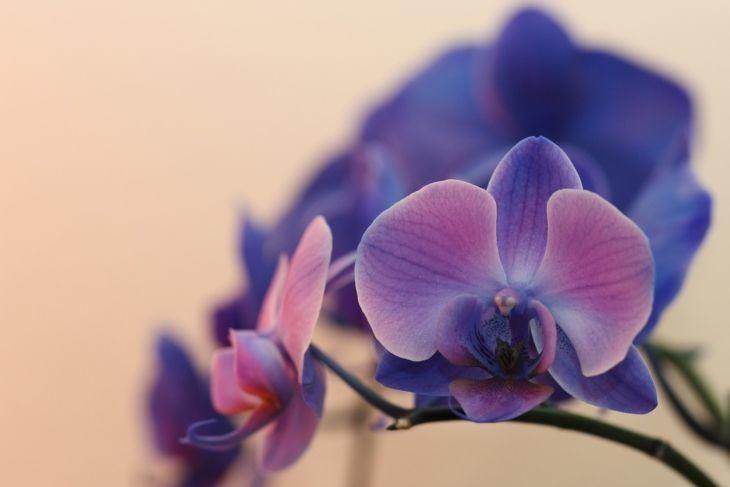
For those who do not know, the blue orchid does not exist in nature, and it is by means of a manipulation in the plant phalaenopsis white There are two types of process to create the bluish color in the plant. The first, developed in the United States, consists of injecting a blue dye into the stem of white orchids. The substance is characterized by not being toxic and, therefore, does not harm the plant.
The second technique, also used mainly in Brazil, was invented by agronomist Marcos Alexandre and occurs in a similar way. A blue substance is injected into the plant, but the infusion takes place before the seed germinates, and is later absorbed by the spongy surface of the root.
See_also: Kids' Birthday Invitations: Ideas and Tutorials for KidsIn both cases, it is not guaranteed that all future flowers will be born blue in color. Also, depending on how the plant absorbed the substance, the shades of blue can also vary. Some flowers end up with a lighter shade of blue, while others have a much darker tone.
Yet, what for some can be perceived as blue, for others can be considered a shade close to purple, because as this coloring does not exist in nature, it is very common that it is not possible to reach pure blue. In most cases, the blooms that follow end up being white, because of the plant's natural filtering system.
The blue orchid can be found for an average price of R$300 to R$350, which may be higher according to the arrangement.
How to care for a blue orchid
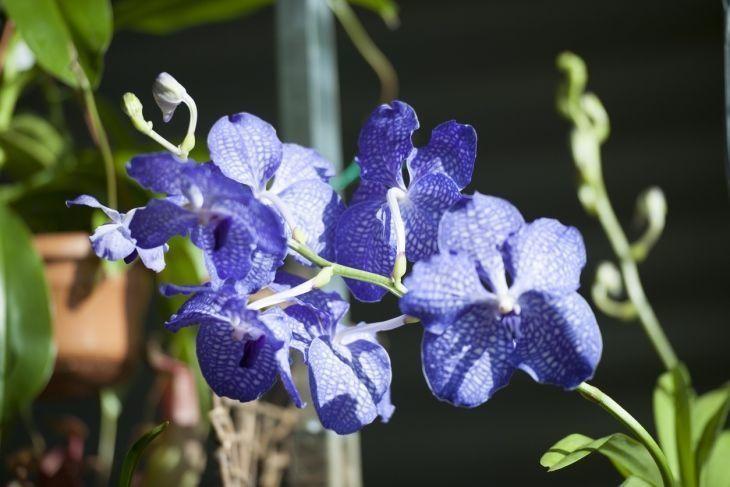
This unique plant requires special care. There are those who prefer to cultivate orchids outdoors, where their reproduction relies on natural weather factors. However, it has become common to find them inside houses and apartments, adorning living spaces.
The landscape designer Paulo de Tarso tells us a little more about this plant, "orchids are flowers of unusual beauty, with different and sometimes surprising shapes, exotic scents, surreal colors and shades. The main characteristic is to surprise everyone with their presence, since some people identify in their shapes elements such as bodies, faces and animals. They have characteristicsexotic - since it is not shaped like a common flower, orchids bring a sense of delicacy and have high commercial value, because it is widely used in decorating environments".
Although they adapt well to any location, Tarso makes it clear that the bathroom is a space to be avoided, because it has excess humidity. "The ideal are environments that have indirect light such as the living room and offices. In some cases, with allergic people, avoid placing them inside bedrooms".
Due to the chemical process, this orchid should be watered preferably in the morning, with mineral water from wells or rain water, and in the last case, water from a water tank - since chlorine is harmful, explains Tarso. Each detail is responsible for the growth of your plant and the duration of its blooming, which can last from 30 to more than 90 days.
"Depending on the climate, watering should be done about one to three times a week in dry weather. As the orchid captures humidity from the air, in cooler climates it is ideal to check the substrate, since there is no need to water as much as in dry climates. Never put it right in the sun, enjoy the morning or late afternoon sun. Avoid splashing water directly on the flower and try to leave it near placesnear the windows," he continues.
Therefore, for your plant to grow in a healthy way, try to follow some precautions, such as leaving them in a lighted environment near windows and doors, to guarantee air circulation; keep the substrate always slightly humid; avoid nightly watering; ants and mealy bugs are harmful to orchids, to solve the problem the ideal is to use string tobacco syrup with neutral detergentdissolved in water.
If you want to cultivate your orchid in an apartment, be aware that you must take extra care, because the atmosphere tends to be drier, which besides dehydrating the plant, is favorable to the appearance of pests. In this case, air humidifiers can be a great solution. If, even so, your plant ends up dehydrating and causing the appearance ofSome nurseries, as a form of prevention, apply neem oil, which is an organic insecticide, every 15 days.
20 blue orchid images for inspiration
Orchids decorate living spaces in an elegant and refined way, the color blue in particular is considered a cool color and can be used in healthcare settings such as receptions, hospitals, and medical clinics. Blue also calms, reduces stress, anxiety, and improves emotional health.
See_also: Minions souvenirs: 75 cute models and step by step videosFor commerce, the color blue indicates reliability and loyalty. It can be used both at parties, events, and gatherings and in places of study, since this color harmonizes energies, according to landscape designer Paulo de Tarso. After understanding a little more about the famous Blue Mystic, check out some images for inspiration.
1. the blue orchid also goes well with low and wide pots
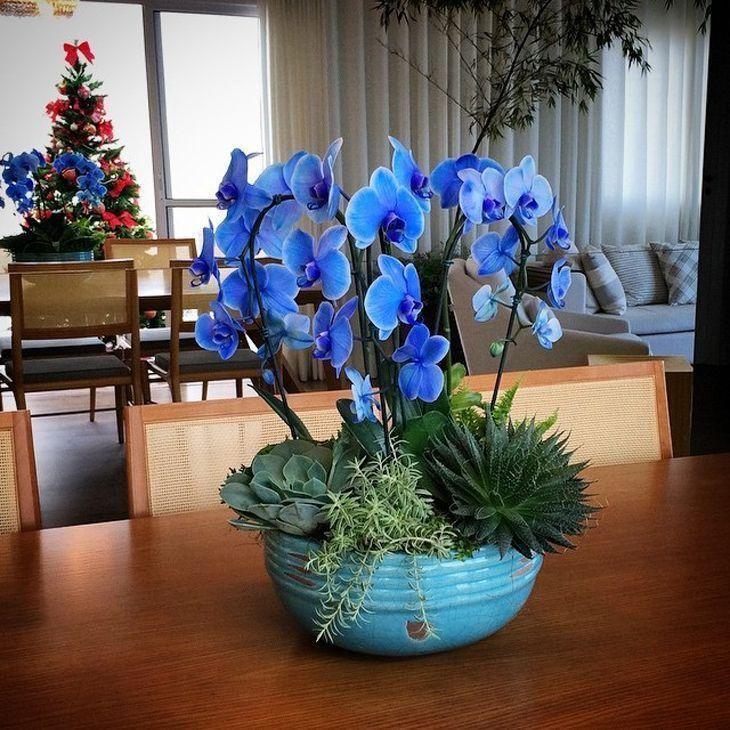
Dining tables are great places to put your orchid in evidence
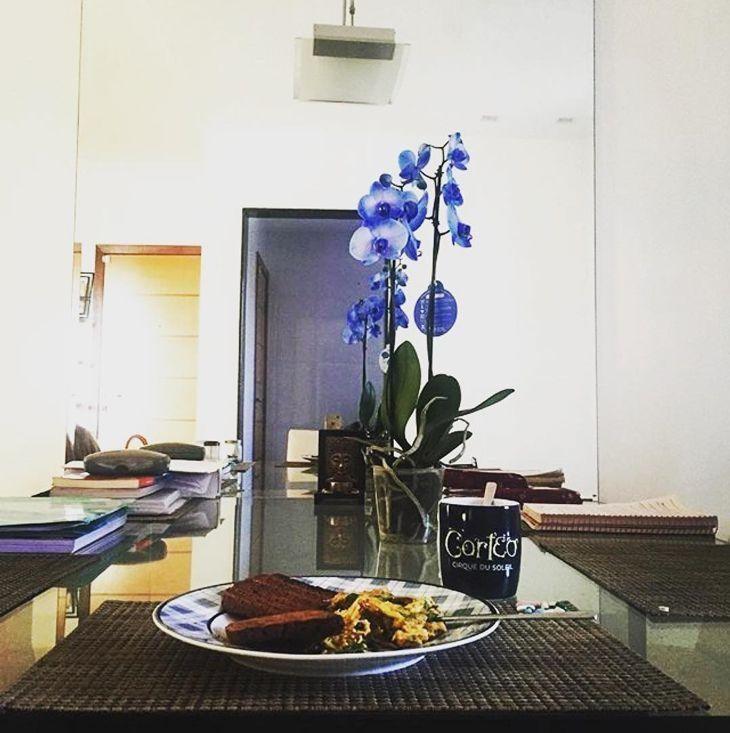
3. wood details add charm to the composition
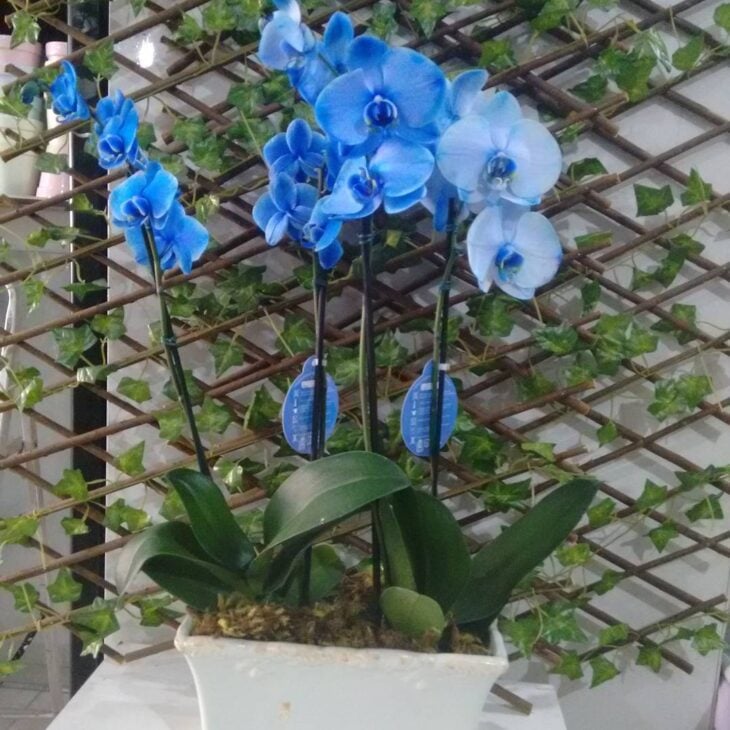
4. creating a crockery corner for your orchid can be a great idea
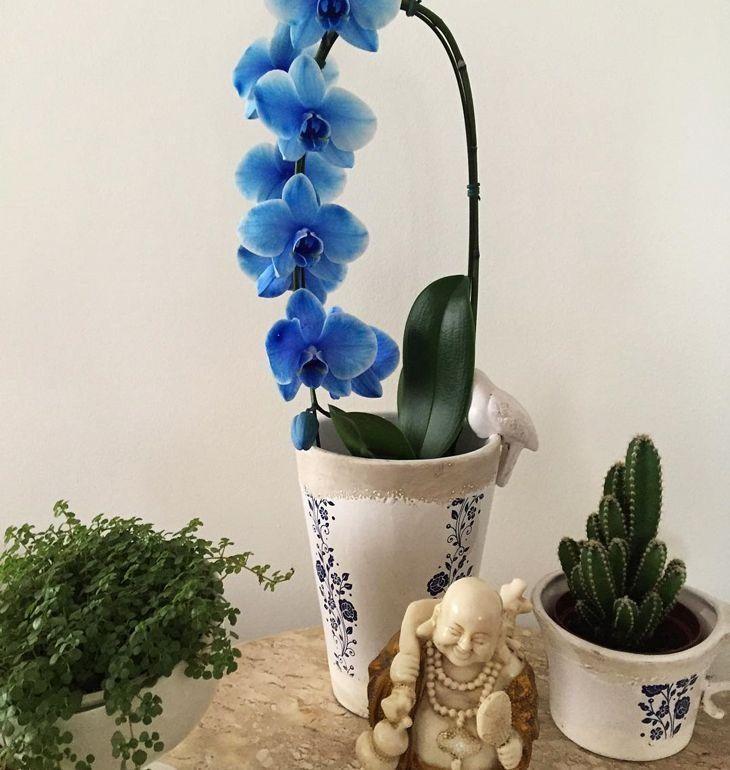
5. the metallic touch added even more luxury to the decoration
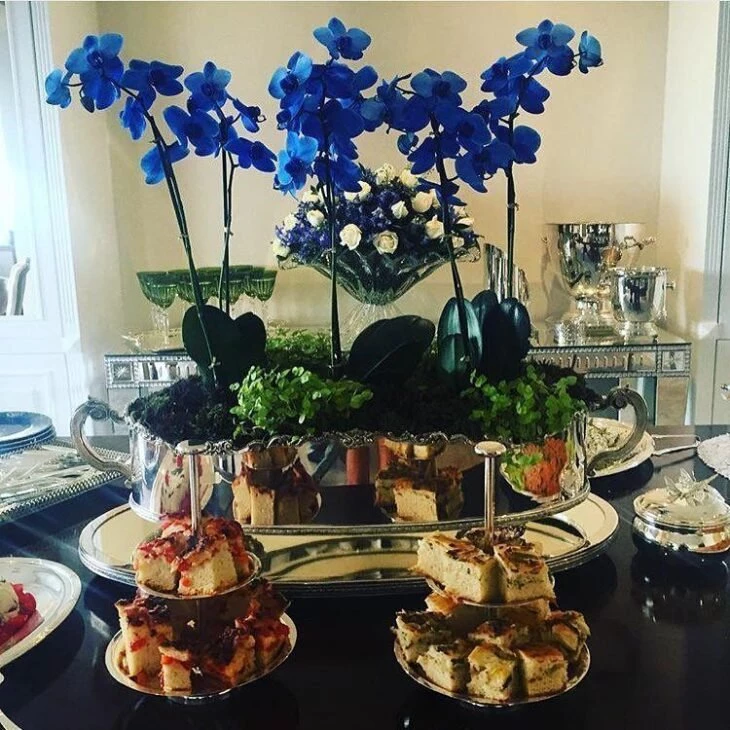
6. the blueness of the bouquet contrasts with the white dress and brings the bride to life

7. in this arrangement the orchid stands out and creates a tropical climate together with other plants
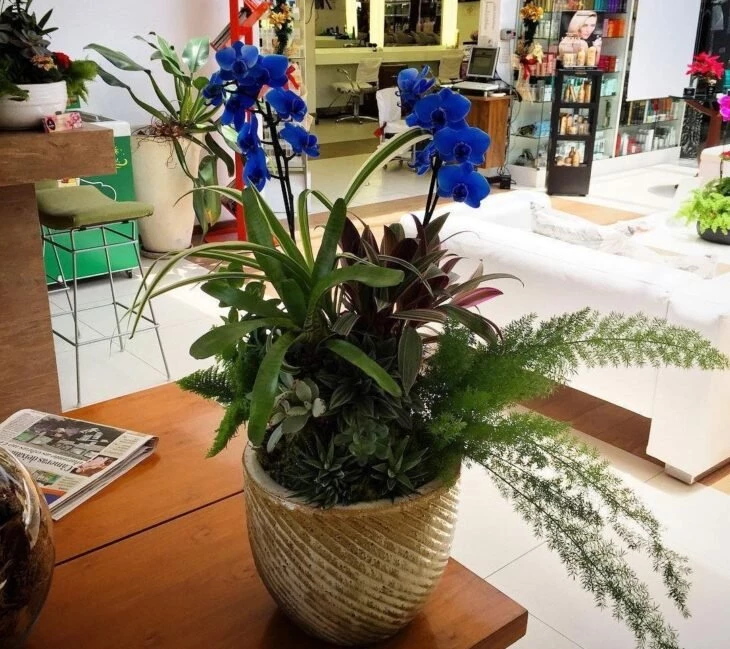
8. blue can transform the room by inspiring better reflections
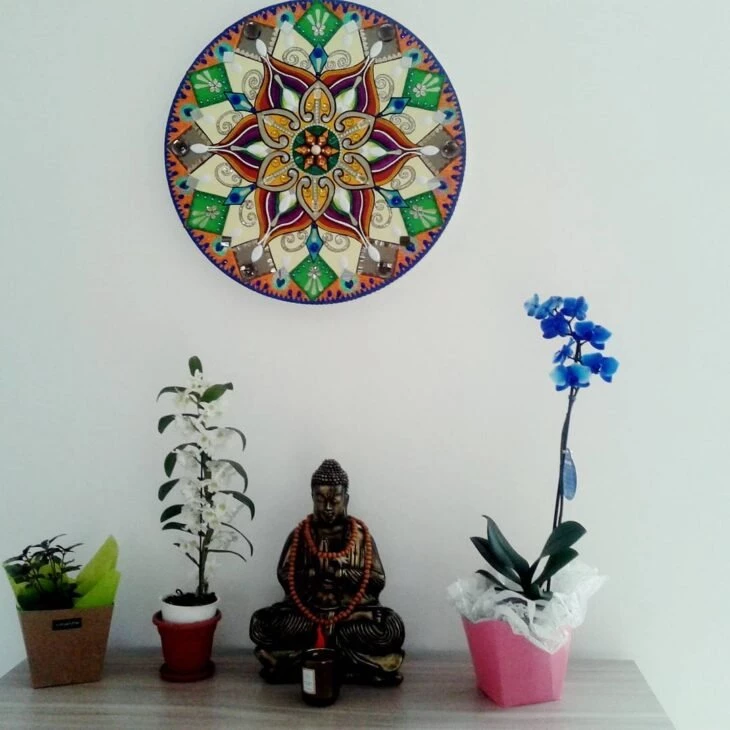
9. plastic orchids can be a great option for those who do not have time to cultivate them
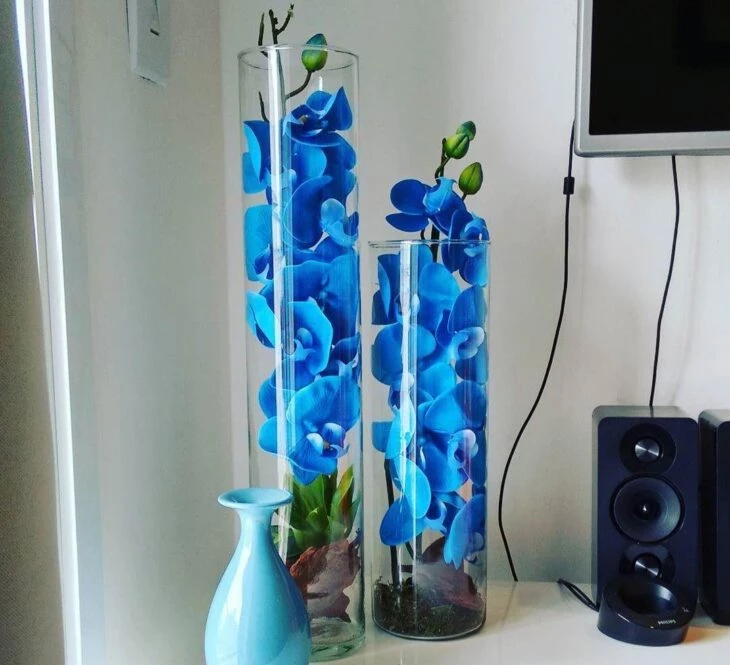
10- Pay attention to the light and humidity of the environment that will receive your little plant
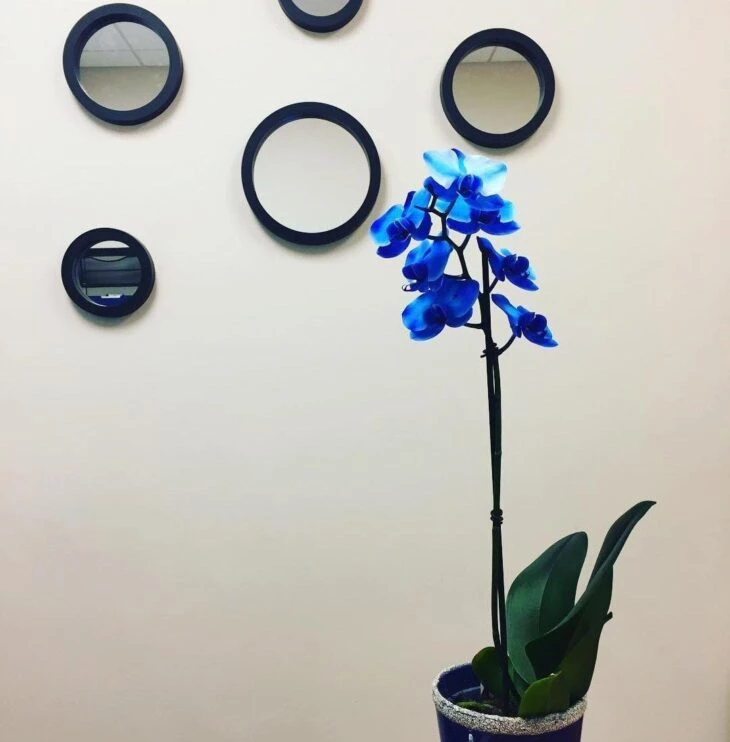
11. the combination of white and blue is very common and brings lightness to the environment
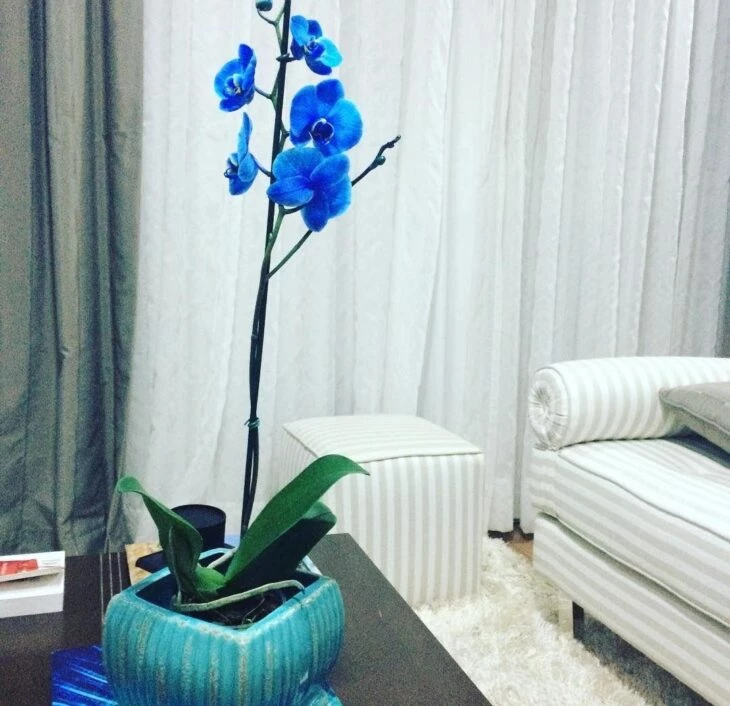
12. east and north facing windows are the most recommended ones to place your orchid
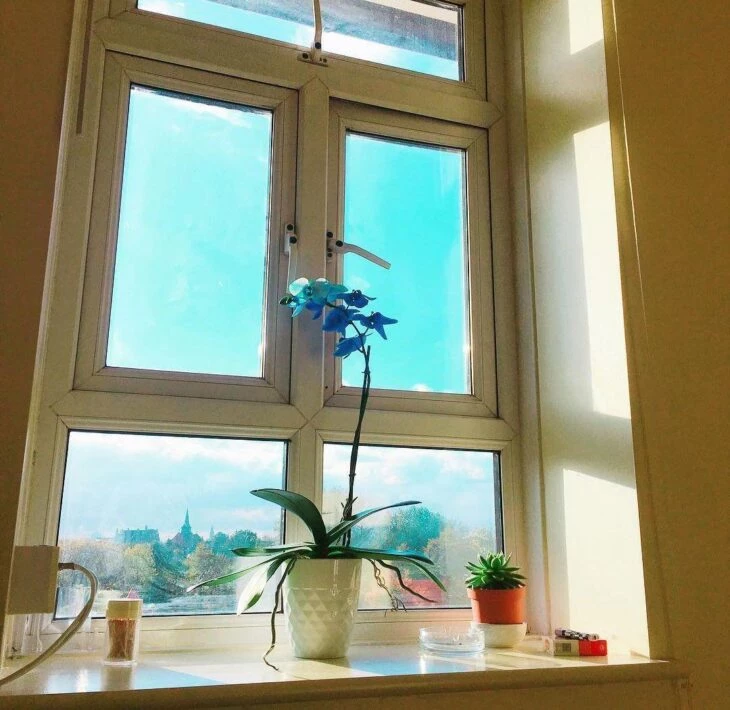
13. there are also smaller sized orchids, such as the bonsai type
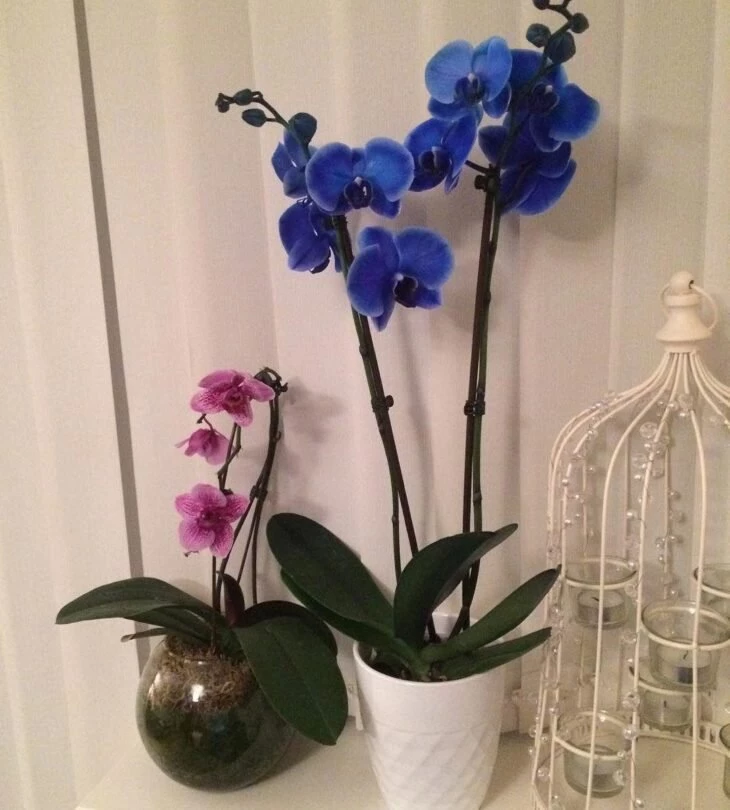
14. a few centimeters away from the window can make a difference in the amount of light the plant receives
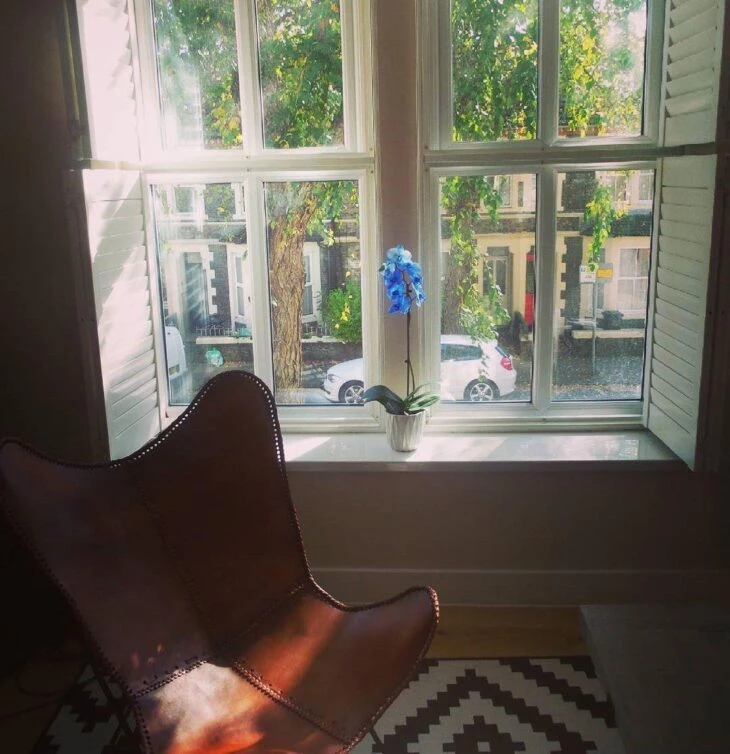
15. when it comes to bedrooms, the nightstand is a great place to receive the plant
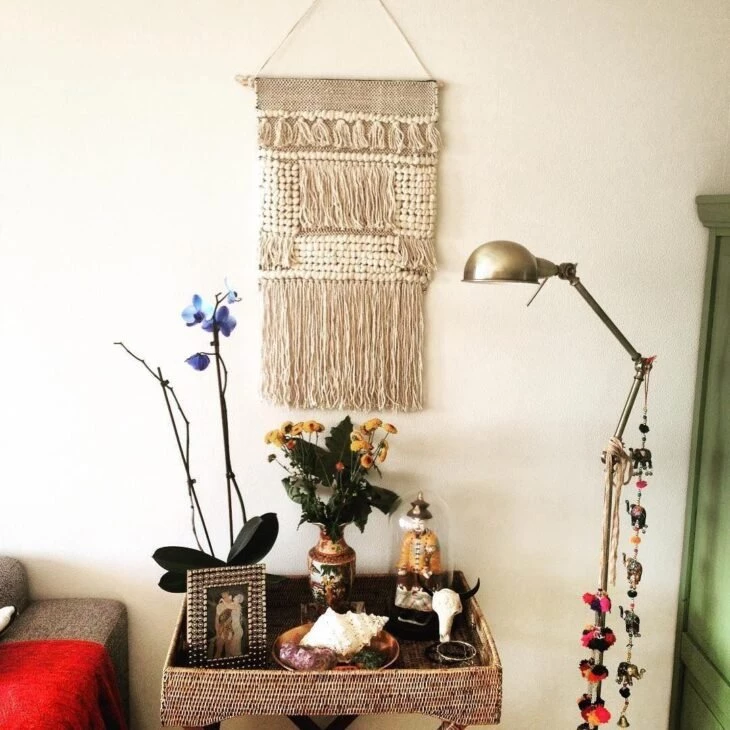
16. washbasins are more advisable than regular bathrooms, because they are not as humid

17. avoid flowers and flower buds to prevent fungus
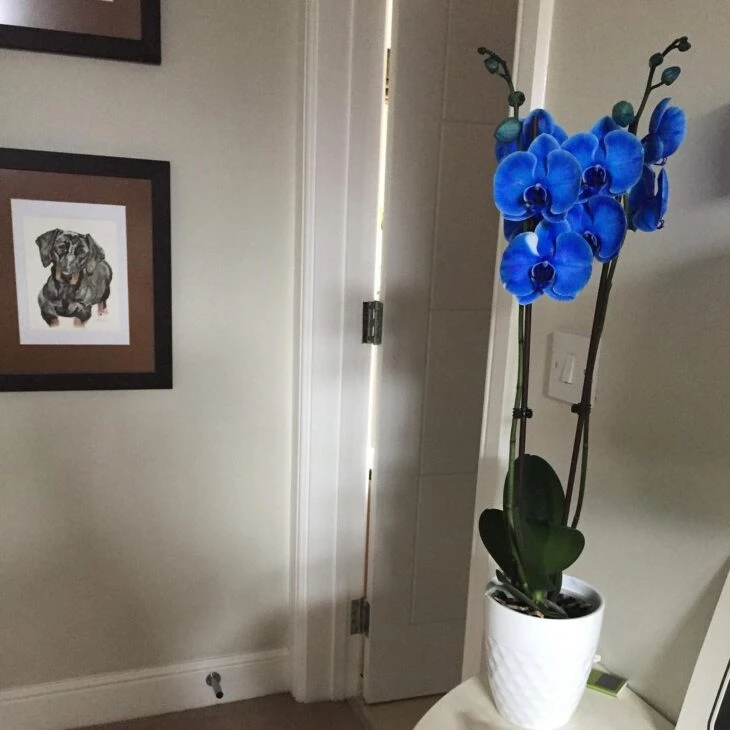
The benefits of growing orchids are many. For some, it can help with anxiety treatments, as well as acting as an escape at the end of the day after a stressful work routine.
In any case, the result of its cultivation is rewarding and will certainly be a reason for many compliments. Now just take advantage of these tips and add this amazing plant to your home decor.



